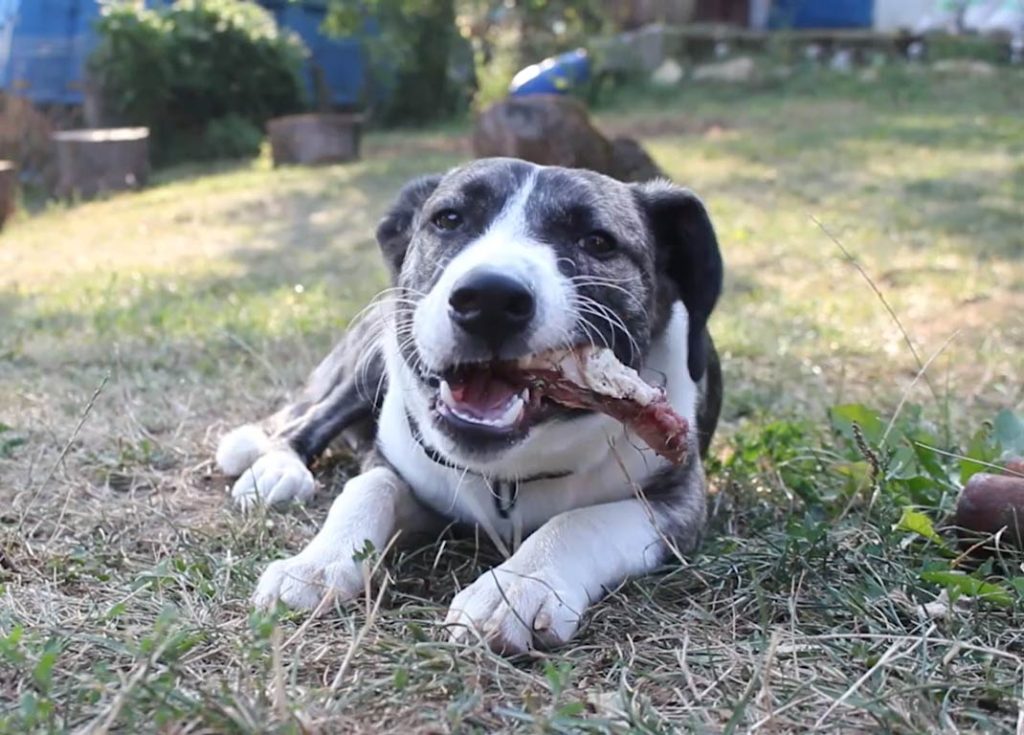Can Dogs Eat Snake Skin?
Have you ever noticed your curious canine sniffing intently at a shed snake skin on your hike? While snakes and dogs might not be the best of buddies, the question of whether dogs can eat snake skin often pops up in pet owners’ minds.
On the one hand, it’s just a dried-up layer of outer skin, right? On the other hand, we all know dogs have a knack for gobbling down things they shouldn’t. So, the debate remains: can dogs eat snake skin, and if so, should they?
Let’s delve into the scaly world of snake sheds and unravel the truth about their digestibility for our furry friends.
Related post-
Can Dogs Eat Snake Skin?
The good news is, generally speaking, snake skin isn’t toxic to dogs. It’s primarily composed of keratin, the same protein found in their own hair and nails. So, in theory, munching on a shed skin shouldn’t cause any immediate harm.
However, before you give your dog the green light to become a snake-skin connoisseur, there are a few caveats to consider:
- Size and Digestibility: Large pieces of snake skin or ingesting a significant amount can cause digestive upset, leading to vomiting or diarrhea. Remember, a dog’s stomach isn’t built to break down large, indigestible chunks.
- Parasites: Snakes can harbor internal parasites like roundworms or tapeworms. If your dog ingests the skin, these unwelcome guests could hitch a ride into their digestive system.
- Chemical Exposure: If the snake was treated with pesticides or other chemicals, the skin could be toxic to your dog. It’s always best to err on the side of caution, especially if you’re unsure of the snake’s origin.
So, while snake skin itself isn’t inherently poisonous, it’s crucial to be mindful of these potential risks before letting your dog indulge in their scaly curiosity.
In the next section, we’ll explore these risks in more detail and provide some helpful tips for keeping your dog safe around snake skin. Stay tuned!

Risks and Concerns
While ingesting snake skin may not be an immediate death sentence, it’s not entirely risk-free either. Here are some potential downsides to be aware of:
Digestive Issues:
- Gastrointestinal irritation: The rough texture of the skin can irritate the lining of your dog’s stomach and intestines, leading to mild discomfort.
- Intestinal blockage: Large pieces of snake skin can get stuck in your dog’s digestive tract, causing constipation, painful straining, and potentially requiring veterinary intervention.
- Vomiting and diarrhea: These are common signs of your dog’s body trying to expel the irritating or indigestible material.
Parasites:
- Internal parasites: Snakes can harbor a variety of parasites, including roundworms and tapeworms. If your dog swallows the skin, these parasites can take up residence in their intestines, causing weight loss, anemia, and other health problems.
- Zoonotic parasites: Some parasites can be transmitted from dogs to humans, so vigilance is important to protect yourself and your family.
Chemical Exposure:
- Pesticides: If the snake was exposed to pesticides or other chemicals, these toxins can remain in the skin and be harmful to your dog if ingested. Symptoms might include lethargy, tremors, and even seizures.
- Snake repellents: Similar to pesticides, snake repellents applied to yards or gardens can leave residues on the skin that can be poisonous to dogs.
Tips for Pet Owners
Keeping your dog safe when it comes to snake skin is all about prevention and awareness:
- Leash up and watch out: Keep your dog on a leash and closely supervise them during walks in areas with a high snake population.
- Distract and redirect: If your dog starts to focus on a shed skin, offer them a high-value treat or engaging toy to distract them.
- Know your surroundings: Be aware of areas where snakes are common and remove any shed skins you find on your property.
- Observe your dog: Watch for any signs of gastrointestinal upset, excessive scratching, or unusual behavior after encountering snake skin.
- Contact your veterinarian: If your dog ingests a large amount of snake skin, shows any concerning symptoms, or you suspect the snake was treated with chemicals, don’t hesitate to contact your veterinarian immediately.
Remember, it’s always better to be safe than sorry when it comes to your dog’s health. By taking these precautions and being mindful of the risks, you can ensure your furry friend enjoys safe and healthy adventures, even in snake-prone areas.
Conclusion
While the thought of your dog munching on a snake skin might be unsettling, the good news is, it’s usually not a cause for immediate alarm. Snake skin itself isn’t poisonous, and in small amounts, it’s likely to pass through their digestive system harmlessly. However, it’s crucial to approach this scaly treat with caution.
Remember, the risks of digestive upset, parasite transmission, and chemical exposure are real. By keeping your dog on a leash, practicing watchful walks, and avoiding areas with a high snake population, you can significantly reduce the chances of them encountering snake skin in the first place. Ultimately, responsible pet ownership means prioritizing preventative measures and being prepared to act quickly if your dog’s curiosity gets the better of them.
So, can dogs eat snake skin? The answer is yes, in theory, it shouldn’t cause immediate harm. But before letting your canine companion become a scaly connoisseur, consider the potential risks and prioritize their safety. With awareness and responsible stewardship, you and your furry friend can enjoy adventures in even the most slithery corners of the world.
This conclusion offers a final recap of the key points, reiterates the importance of caution and prevention, and ends on a positive note about responsible pet ownership. You can modify the tone and length to fit your specific content and target audience.
I hope this completes your content outline! If you have any further questions or need any additional sections, please let me know. I’m happy to help!
